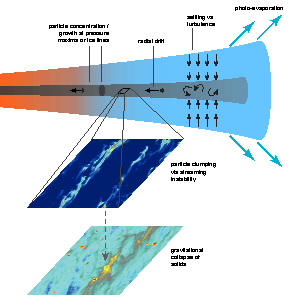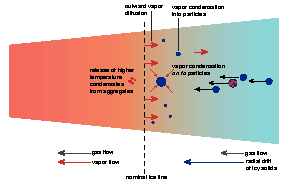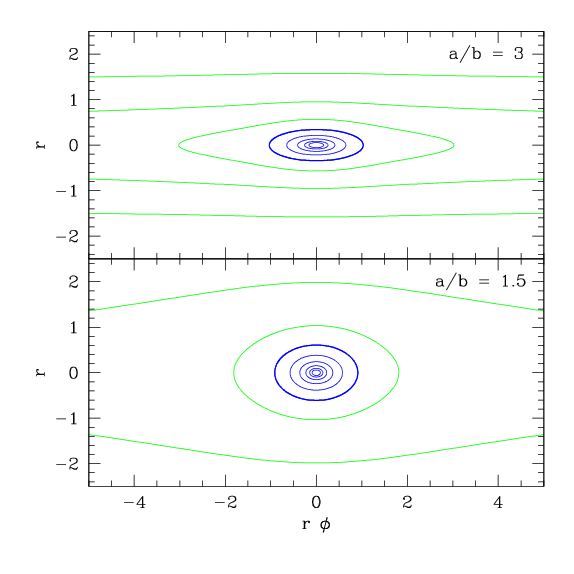CLICK ON the images below to download pdf versions of some of the illustrations for the article "Physical processes in protoplanetary disks" (P.J. Armitage, to appear in 45th Saas-Fee Advanced Course "From protoplanetary disks to planet formation"). A couple of movies shown in the lectures are also available. These are unedited figures: you are free to use them in presentations etc.
Illustrations

Illustration of some of the main heating and cooling processes in protoplanetary disk atmospheres.

Illustration of how a warped disk sets up an oscillating radial pressure gradient (after Figure 10 in Lodato & Pringle (2007)).

The different regions in a classical Blandford-Payne MHD disk wind (figure adapted from Spruit (1996)).

A summary of some of the various processes that might generate turbulence within protoplanetary disks.

A cartoon view of the main gas-phase instabilities in disks - the MRI, self-gravity, the vertical shear instability, and the subcritical baroclinic instability.

A depiction of the physical origin of the magnetorotational instability, in the simplest case where the initial magnetic field is a perturbed vertical field.

Regions in the density / magnetic field plane where, very approximately, we might expect different non-ideal MHD terms to be important.

An illustration of what is going on in the Hall shear instability (see Kunz (2008)). This illustration is based on one shown by Geoffroy Lesur.

A schematic illustration of our "best guess" for how MHD driven accretion in protoplanetary disks might proceed, here in the case where the net field is aligned with the disk rotation axis (after Simon et al. (2015)).

Different processes that might give rise to episodic accretion in Young Stellar Objects.

Left panel: the physics behind the radial drift of aerodynamically coupled solids in protoplanetary disks. Right panel: the predicted rate of radial drift (in orbital periods) as a function of the dimensionless stopping time of the particles involved.

A cartoon showing possible processes that might result in disks attaining the conditions needed to initiate the streaming instability (snapshots from simulations by Jake Simon).

Physical processes expected to operate in the vicinity of ice lines within the disk.

Streamlines of the Kida vortex solution for different values of the vortex aspect ratio. The blue contours show the vortex core.
Movies

Local simulation of disk turbulence in the ideal MHD limit, from Emergent mesoscale phenomena in magnetized accretion disc turbulence (Simon, Beckwith & Armitage 2012).

Simulation of the streaming instability (Jake Simon, in preparation). The rendering depicts the density of particles in the (r,phi) plane. The first part of the movie shows the initial phase of particle clumping as the streaming instability grows. The movie then cuts to a later epoch, just before the densest clumps collapse gravitationally into planetesimals.
Additional movies from some of these simulations are available at Jake Simon's web page.